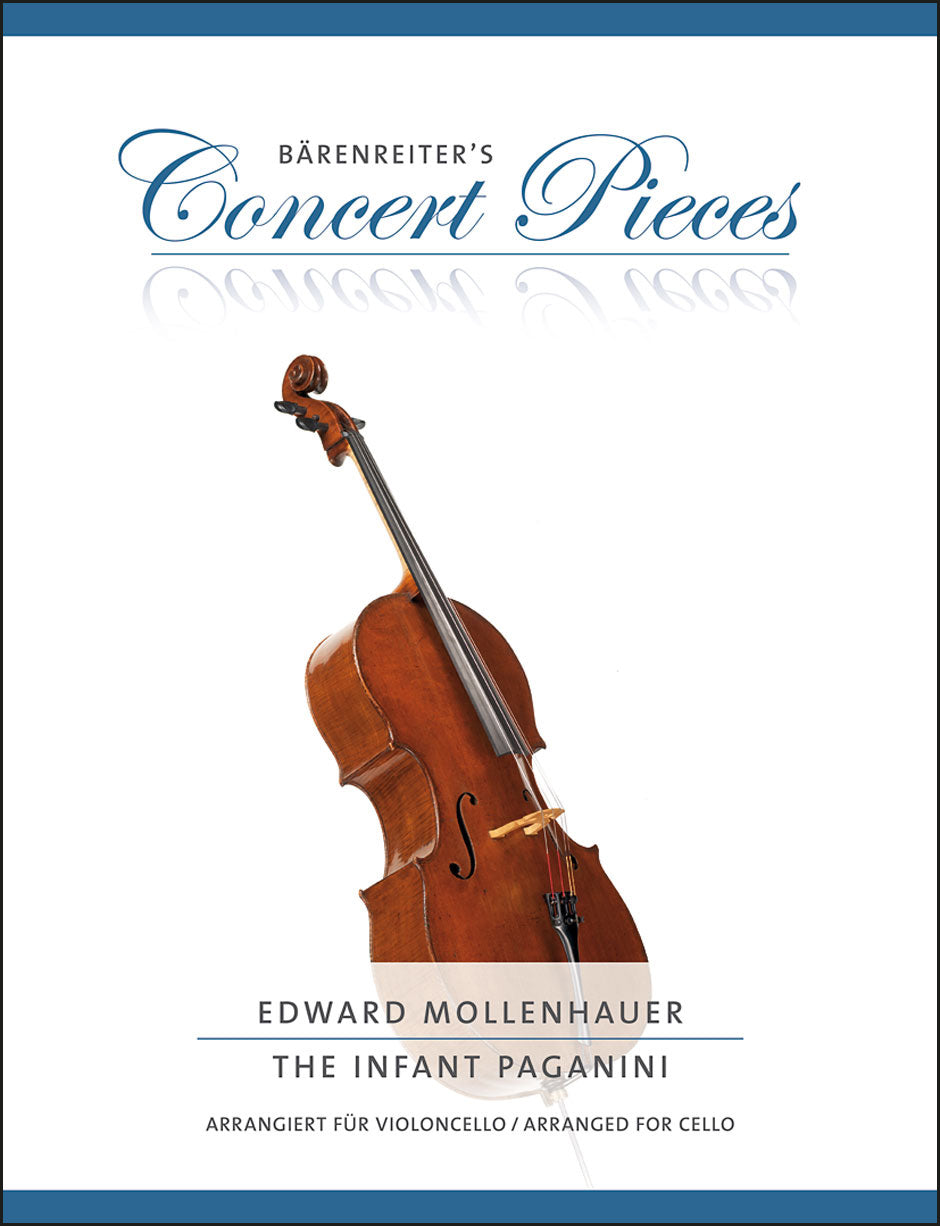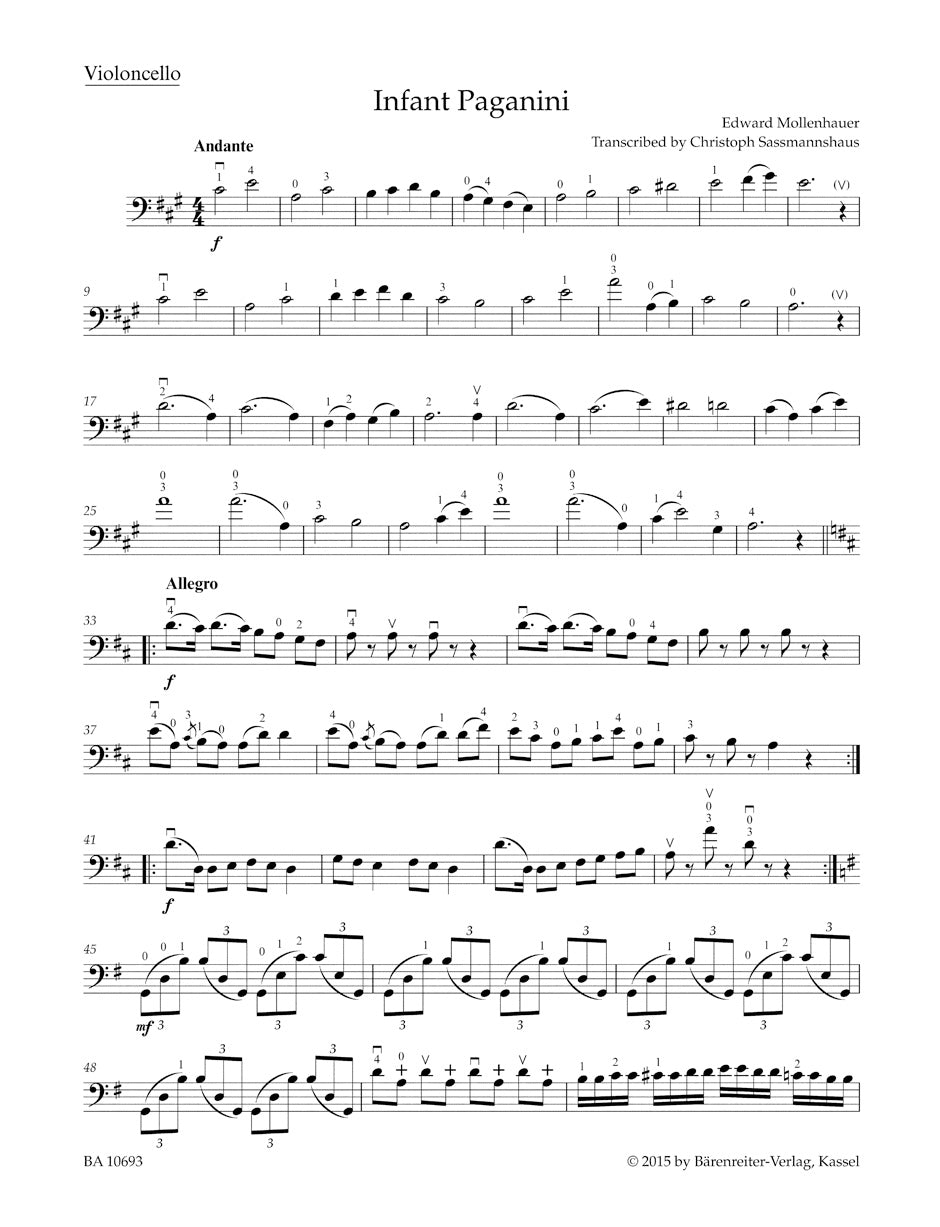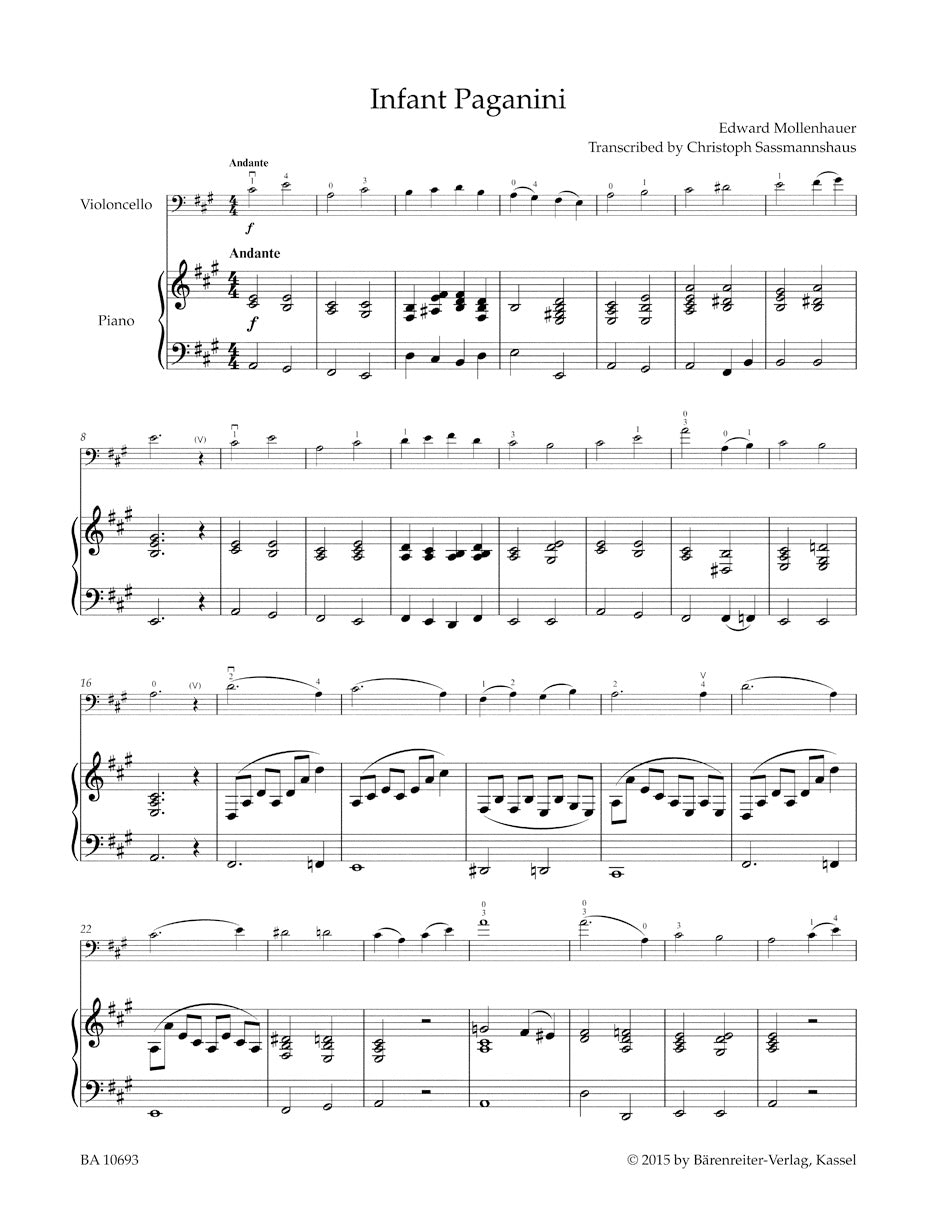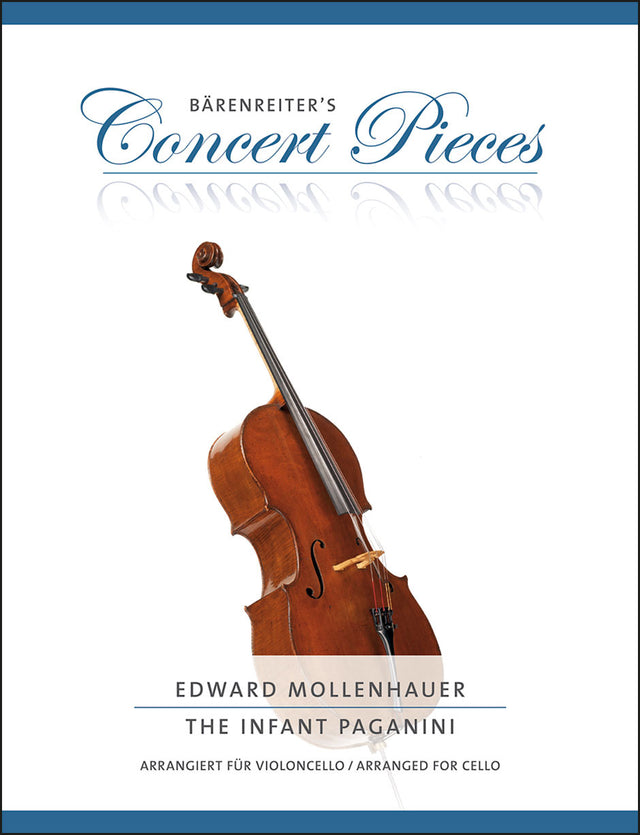Mollenhauer: The Infant Paganini (arr. for cello & piano)
In stock and typically ships within 1 business day.
- Composer: Eduard Mollenhauer (1827-1914)
- Instrumentation (this edition): Cello, Piano
- Originally for: Piano, Violin
- Work: The Infant Paganini
- ISMN:
- Size: 9.1 x 11.8 inches
- Pages: 10
Description
Born in Erfurt, the composer Edward Mollenhauer (1827–1914) achieved success in America as a soloist and teacher. His best-known pieces for young violinists are "The Infant Paganini" and "The Boy Paganini". Both appear here in their original version for violin and piano and, for the first time, in a transcription for cello and piano by Christoph Sassmannshaus.
The Mollenhauer fantasia "The Infant Paganini" is a charming introduction to early virtuoso techniques. It calls for bowing techniques such as detaché, legato, spiccato and arpeggios over three strings. Players are also expected to play harmonics and pizzicato.
This showpiece (BA 10691) can be accomplished by young violinists who can play in first to third position and who are nearing completion of the Sassmannshaus Early Start on the Violin, volume 4.
It (BA 10693) can be equally mastered by young cello students who are working with volume 4 of the Sassmannshaus "Early Start on the Cello" and can manage first to fourth position.
"The Boy Paganini" is an impressive concert piece which is more demanding. Its two movements call for changes of metre, harmonics and pizzicato. Other challenges include chords on all four strings and simple passages in octaves.
On the violin (BA 10692), the technical requirements call for first to fifth position whereas on the cello (BA 10694), the student must be able to play in first to fourth position.
Both violinists and cellists should have completed volume 4 of "Early Start on the Violin" and "Early Start on the Cello" respectively in order to master this work.
Publishers use a lot of words to describe what they sell, and we know it can be confusing. We've tried to be as clear as possible to make sure you get exactly what you are looking for. Below are descriptions of the terms that we use to describe the various formats that music often comes in.
Choral Score
A score for vocalists that only contains the vocal lines. The instrumental parts are not there for reference. Generally, cheaper than a vocal score and requires multiple copies for purchase.
Facsimile
Reproductions of the original hand-written scores from the composer.
Full Score
For ensemble music, this indicates that the edition contains all parts on a single system (there are not separate parts for each player). In larger ensembles, this is for the conductor.
Hardcover
Hardbound. Generally either linen-covered or half-leather.
Orchestral Parts
Similar to a wind set, this is a collection of parts. In the case of strings, the numbers listed are the number of copies included, though generally these are available individually (often with minimum quantities required).
Paperback
When publishers offer multiple bindings (e.g. hardcover) or study scores, this is the "standard" version. If you're planning to play the music, this is probably what you want.
Performance / Playing Score
A score of the music containing all parts on one system, intended for players to share. There are not separate parts for each player.
Set of Parts
For ensemble music, this indicates that there are separate individual parts for each player.
Solo Part with Piano Reduction
For solo pieces with orchestra, this is a version that contains a piano reduction of the orchestra parts. For piano pieces, two copies are typically needed for performance.
Study Score
A small (think choral size) copy of the complete score meant for studying, and not playing. They make great add-ons when learning concertos and small chamber works.
Vocal Score
A score prepared for vocalists that includes the piano/organ part or a reduction of the instrumental parts.
Wind Set
For orchestral music, this is a collection of wind and percussion parts. The specific quantities of each instrument are notated.
With Audio
In addition to the printed music, the edition contains recordings of the pieces. This may be an included CD, or access to files on the internet.
With / Without Fingering (Markings)
Some publishers prepare two copies - a pure Urtext edition that includes no fingering (or bowing) suggestions and a lightly edited version that includes a minimal number of editorial markings.





